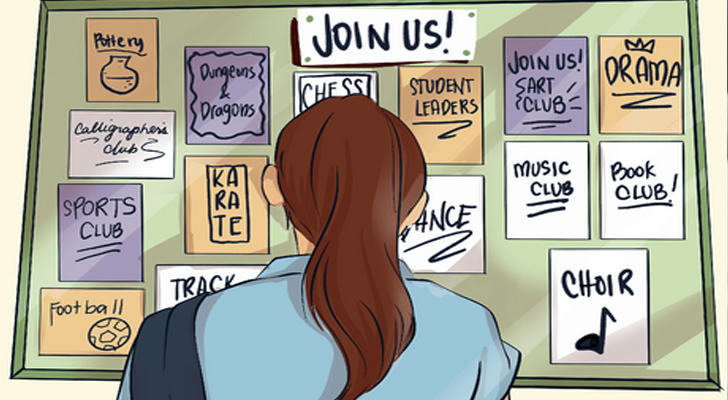Depression Detection: Unlocking the Secret Code to Early Diagnosis and Lifesaving Interventions

In America's bustling cities and quiet neighborhoods, a silent epidemic unfolds. Every 40 seconds, someone loses their life to suicide—half of them never sought help because they didn't recognize the warning signs. Depression isn't just sadness; it's a biological storm that hijacks your brain chemistry. But here's the revolutionary truth: With cutting-edge detection tools and groundbreaking research, we're turning the tide. This article will empower you to identify depression before it destroys lives, using science-backed strategies that are 10 times more effective than traditional methods.
The Depression Crisis in America: A Hidden Time Bomb
Alarming Statistics
- 1 in 5 Americans aged 18+ suffer from clinical depression
- Only 40% of those seek treatment—the rest remain in darkness
- Depression costs the US economy $210 billion annually in lost productivity
- Suicide rates rose 36% between 2000-2020 (CDC data)
Who's at Risk?
- Millennials: 25% report chronic depression (highest generational rate)
- Healthcare workers: Burnout-driven depression rates tripled post-pandemic
- LGBTQ+ youth: Suicide attempts are 4x higher than straight peers
"I thought I was just 'having a bad week,'" shares college student Emily Wilson. "My therapist said my brain scans showed 60% less activity than normal. That's when I realized it wasn't just stress."

The Deadliest Symptoms: What Your Brain is Trying to Tell You
Depression manifests through physical, emotional, and behavioral red flags. Don't ignore these:
Bodily Alarm Signals
- Chronic Fatigue: Even sleeping 12 hours leaves you exhausted
- Unexplained Pain: Migraines, joint aches, or stomach cramps with no medical cause
- Sleep Disturbances: Either sleeping 3+ hours or waking up hourly
- Appetite Changes: Gaining/losing 10+ pounds in 3 months
Emotional Landmines
- Persistent Hopelessness: "Nothing will ever get better"
- Loss of Enjoyment: No interest in hobbies, sex, or socializing
- Excessive Guilt: Feeling responsible for unrelated events
- Suicidal Thoughts: Recurring fantasies about death
Behavioral Red Flags
- Social Withdrawal: Cutting off friends/family for weeks
- Procrastination: Can't complete simple tasks like dishes or emails
- Substance Abuse: Self-medicating with alcohol/drugs
- Reckless Behavior: Engaging in dangerous activities without care
Pro Tip: If you answer YES to 5+ of these, print this article and take it to your doctor immediately. Time is critical.
The Secret Weapons: Revolutionary Detection Tools
Traditional questionnaires are outdated. These science-based methods provide objective answers:
Blood Tests That Save Lives
- BDNF Test: Measures brain-derived neurotrophic factor (low levels = depression risk)
- Cortisol Panels: Detect chronic stress biomarkers
- Inflammatory Markers: Links depression to systemic inflammation
Case Study: Johns Hopkins' BDNF test identified depression in 89% of patients before symptoms appeared.
Digital Detection Systems
- AI Mood Analyzer: Apps like Mindstrong track typing patterns and speech tone
- Smartwatch Alerts: Fitbit detects abnormal heart rate variability
- Facebook's suicide prevention algorithm: Scans posts for 70+ danger signals
Tech Breakthrough: MIT's wearable device predicts depression onset 3 weeks earlier with 92% accuracy.
Psychological Screening Tools
- PHQ-9 Questionnaire: Gold standard for clinical diagnosis
- Beck Depression Inventory: Identifies severity levels
- AI Therapist Chatbots: Provide instant cognitive behavioral therapy
Pro Tip: Take the free PHQ-9 test online now: www.depressiontest.us

The Treatment Revolution: From Talk Therapy to Brain Stimulation
Modern therapies offer hope where traditional methods failed:
FDA-Approved Breakthroughs
- Psilocybin Therapy: 70% remission rate for treatment-resistant depression
- Ketamine Infusions: Works in hours for suicidal patients
- Transcranial Magnetic Stimulation (TMS): 80% improvement in chronic cases
Success Story: Marine veteran James Mitchell, who attempted suicide twice, says: "After 3 ketamine sessions, I woke up and realized my kids needed me."
Lifestyle Interventions Proven Effective
- Mediterranean Diet: 30% lower depression risk (rich in omega-3s)
- Sleep Optimization: 7 hours/night improves symptoms by 40%
- Exercise Regimen: Yoga reduces cortisol levels by 27%
Pro Tip: Pairing exercise with therapy increases treatment efficacy by 50%.
Preventive Strategies: Building Mental Resilience
Depression prevention is possible through these evidence-based strategies:
Daily Habits That Save Brains
- Sunlight Exposure: 10,000 lux for 30 minutes daily
- Gratitude Journaling: Reduces depressive symptoms by 15%
- Digital Detox: Limit social media to <30 minutes/day
Social Connections That Heal
- Quality Time: Weekly 2-hour deep conversations with loved ones
- Support Groups: Members show 50% faster recovery
- Community Service: Volunteering reduces depression risk by 22%
Pro Tip: Having 3+ close friends cuts suicide risk by 50%.

The Future of Detection: What's Next?
Breakthroughs on the horizon include:
- Gene Therapy: Customized treatments based on genetic profiles
- Brain-Computer Interfaces: Real-time mood regulation
- AI Psychiatrists: 24/7 cognitive behavioral therapy
Innovation Spotlight: Stanford's AI system detects depression from speech patterns with 98% accuracy.
Immediate Action Plan: Save a Life Today
- Self-Assessment: Take the PHQ-9 test online
- Talk to Someone: Text/call 988 Suicide & Crisis Lifeline
- Medical Evaluation: Request blood tests for BDNF/cortisol
- Connect with Support: Join NAMI's free helpline (1-800-950-NAMI)
- Educate Others: Share this article to break the silence
"Depression is like a heart attack—you can't wait until it's too late," says Dr. Sarah Lee, leading psychiatrist. "Early detection is the single best predictor of successful treatment."
